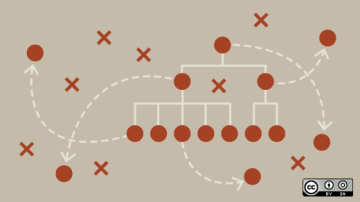Today's manufacturing challenges demand integrated systems. As current events in the world unfold, the manufacturing industry is seeing rapidly changing demand, falling capacity to meet demand, and supply bottlenecks that have become difficult to predict and manage. On top of all of this is the global economic downturn, which impacts many manufacturers and suppliers today and for the foreseeable future.
Manufacturing output decreased by 0.4% in February 2020, following a 1% drop in the previous month. It marks the eighth straight month of annual declines in factory activity in the U.S. Also, according to the U.S. Bureau of Labor Statistics, over the last decade, the number of manufacturing jobs has steadily declined. In March 2020, average weekly hours fell by 0.3 hours for all manufacturing workers and by 0.3 hours for production employees. The skills gap is also widening in manufacturing and is expected to cause losses of $454 billion in manufacturing GDP by 2028.
Succeeding in the manufacturing industry under the present constraints and future uncertainty requires precision, efficiency, and sustainability for delivering high-quality products on time. This challenge is best supported by a properly designed open source enterprise resource planning (ERP) solution. The business system automates and streamlines various tasks ranging from the shop floor to the administrative desk. Advances in open source manufacturing technologies allow a process to be performed with minimal human assistance. These technologies are addressing the labor shortage and falling job growth in manufacturing.
Introducing open source ERP systems for manufacturing
All of the above challenges create an opportunity to advance productivity initiatives and manufacturing efficiencies, thus enabling higher quality work and increased throughput, with less workforce capacity. The integration and automation of manual, costly, time-consuming, and repetitive tasks allow fewer workers to complete more work, which contributes to a manufacturer's competitive advantage.
Because of its many benefits, open source adoption for manufacturing automation and IT infrastructure is sweeping across the industry. Open source software is any type of program or application that developers can inspect, copy, modify, and redistribute. It is software that is publicly accessible and allows exchanging code and ideas in a transparent and collaborative manner. Open source software gives manufacturing businesses the flexibility they need to solve a wide range of problems.
The open source software services industry is set to exceed $17B in 2019 and expected to reach nearly $33B by 2022, according to CB Insights' market sizing tool. Today, more than 30 million developers contribute to community-based open source software platforms like Gitlab, Github, and others.
Open source licenses dictate how the software can be used, outlining different policies for modifying and redistributing the source code. It is common for open source software publishers to release a license that is already approved by the Open Source Initiative and popular with the community.
Manufacturing ERP is the integrated management of main business processes, often in real-time and mediated by software and technology. Open source ERP for manufacturing has played a huge role in managing overall productivity and growth in manufacturing enterprises over the last decade. By combining open source software with the advantages of ERP, a myriad of manufacturing business processes can be integrated together, saving time and expense. Manufacturing decision-makers can react to changes faster and with fewer errors, as more data becomes visible across the organization. They can take control of their supply chain to deliver products faster, with fewer resources, and at a lower cost.
Some of the important manufacturing tasks that benefit most from integration with ERP include:
- Sales and order forecasting, which allows inventory to be optimized
- Chronological history of every transaction through relevant data compilation across the enterprise
- Order tracking, from acceptance through fulfillment
- Revenue tracking, from work order through cash receipt
- Matching purchase orders with inventory receipts (for raw materials) and costing
Open source ERP software platforms take this a step further, delivering an integrated way to manage HR, financial, managerial, and marketing tasks. Manufacturers of every size can integrate and optimize multiple systems into a single, trusted planning and forecasting solution. Deploying an open source ERP manufacturing solution allows enterprises to:
- Streamline and optimize all processes
- Replace unmanageable legacy systems
- Improve productivity and efficiency
- Increase margins and profitability
- Understand the link between business activities and profit, then adapt
- Create a better customer experience
- Ensure quality and compliance
Cloud-based ERP systems for manufacturing
The benefits of open source are extended and amplified by enabling a move to the cloud. Manufacturers are starting to migrate their business processes to the cloud to take advantage of the capabilities that cloud service providers give them in terms of scale, speed, and reliability. A positive outcome of this could be a significant reduction in costs and improvements in team efficiency by consolidating the solutions powering their supply chains. Powerful laptops, low-cost monitors, high-resolution cameras, and internet-based communication and collaboration tools are all helping to speed up the migration to the cloud.
Modern open source ERPs are cloud-based and give manufacturers the ability to access all aspects of their ERP from anywhere, at any time, from any device. Their data, integrated production planning, shop floor management, CRM, sales orders, inventory, purchasing, accounting, and financial reporting are at their fingertips, regardless of physical location. Remote access is an inherent feature of cloud ERP software.
Integration across the manufacturing enterprise has dramatically evolved in recent years to include customer relationship management (CRM), ERP, and supply chain, helping manufacturers improve visibility into customer and supplier channels to respond to changes quickly. This is becoming more important as volatility and crisis conditions in the market are becoming the norm.
Open source supports simple to complex MRP techniques
A common misconception about open source manufacturing resource planning (MRP) is that it can't handle complicated MRP analysis, forecasting, and techniques. The reality is, in the current, ever-expanding universe of open source offerings, there are tools that handle complex needs like Demand Driven MRP (DDMRP) and complex job planning (software such as Frepple). Tools like these, combined with the easy access to data provided by open source, unlock additional capabilities for trend analysis and operational efficiency analysis. These are gains that the industry is just beginning to realize.
Factors to consider when choosing open source ERP for manufacturers
The following questions are important for manufacturers to consider when selecting an open source ERP software:
- What software platform does the company already use for manufacturing, and what other technologies are used to support the enterprise?
- Will the future development of the company include diversification of activities, upsizing, or downsizing?
- What is the budget for software acquisition and maintenance?
- Are the manufacturer's business processes very complex, requiring specialized technical knowledge, expertise, or software?
- Does the manufacturer require change management or business process reengineering?
The benefits of an all in one MRP
The main advantage of having an open source ERP system for manufacturing, or open source MRP, is the elimination of separate systems across the manufacturing enterprise because all are integrated onto a single platform. As a result, users execute tasks faster and with greater efficiency using readily available data for improved decision making. Some of the customizations that open source MRP provides manufacturers include:
- Scales to specific needs, unlike most proprietary applications
- Supplies robust data exchange via application program interfaces (APIs)
- Supports growth with scalability, connectivity, and reliability
- Minimizes the risk of functionality becoming obsolete with new releases
- Provides access to source code, making software changes and customization easy
- Gives access to the collective expertise of a worldwide open source development community
In conclusion, the open source framework provides amazing flexibility to implement tailored workflows that fit a manufacturing enterprise's specific needs. In today's volatile and highly competitive environment, it can make the difference for manufacturers looking to survive and thrive using an all-in-one solution.







1 Comment